VISIT OF ICWC DELEGATION TO ROGHUN HPP
On 28 November 2018, upon the invitation of the Tajik party ICWC delegation visited the Roghun HPP, which is under construction.
OFFICE OF THE ROGHUN HPP
First, the participants visited the office of OJSC Roghun HPP. Mr. Anvar Rakhmonov, chief operations officer, described the constructed facility and provided detailed information on key structures of the HPP. The layout of subsurface structures showcases that the Roghun hydroscheme is a huge underground city indeed. This fact undoubtedly makes its construction and operation complicated.
Before the collapse of USSR, larger efforts were completed, namely, construction base prepared; construction camp built; more than 20 km of tunnels constructed; turbine and transformer houses completed by 70-80%. Currently, 67 companies are engaged with construction and assembly work, including contractors from Russia, Iran, Ukraine, China, and Germany. Mr. Rakhmonov underlined that all activities are based on the design of Roghun HPP developed by the Central Asian branch of the Gidroproekt Institute (Tashkent) in the Soviet period. The World Bank also highly assessed that design.
By present, 52 km of the tunnel have been constructed out of planned 74 km.
The cost of completed work, including during the Soviet period, is 3.2 billion USD. Additionally 4.5 billion USD will be required to end the construction.
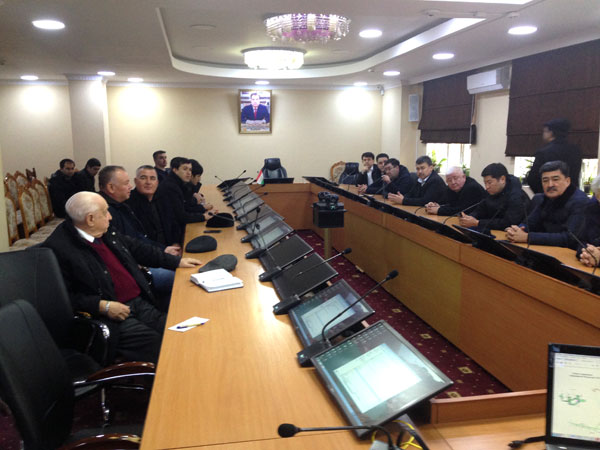
Photo: ICWC delegation at the office of OJSC Roghun HPP
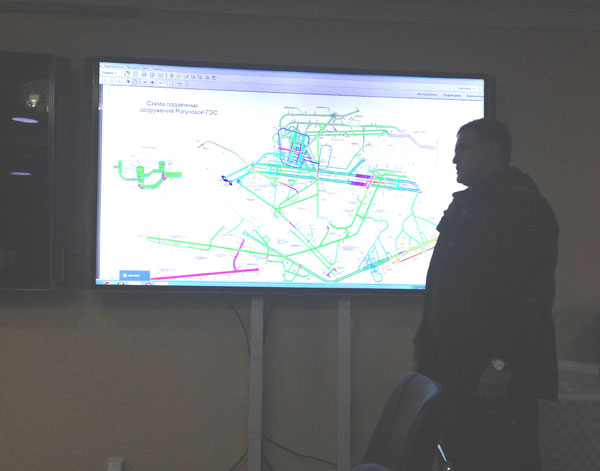
Photo: Rakhmonov M., chief operations officer,
demonstrates the layout of subsurface structures
HEADWATER CREATED BY TEMPORARY DAM
On 26 November 2016, the Vakhsh River was dammed. At the moment, the dam is erected out of 42 million tons of filling material, and the accumulated water volume is 254 million m3. Water is retained by a temporary dam. The construction is planned to be completed by 2027. The design normal reservoir water surface is to be achieved by 2032.
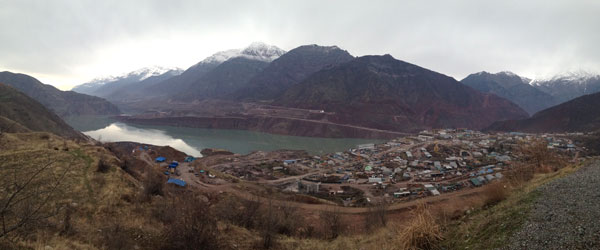
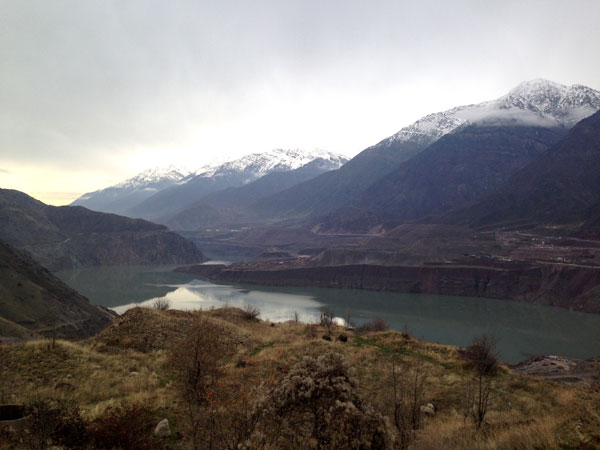
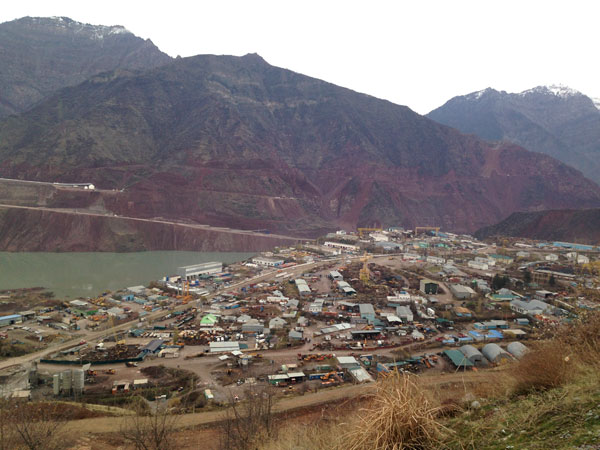
Photo: On the right, headwater created by temporary dam
and the construction site, which will be flooded in the future

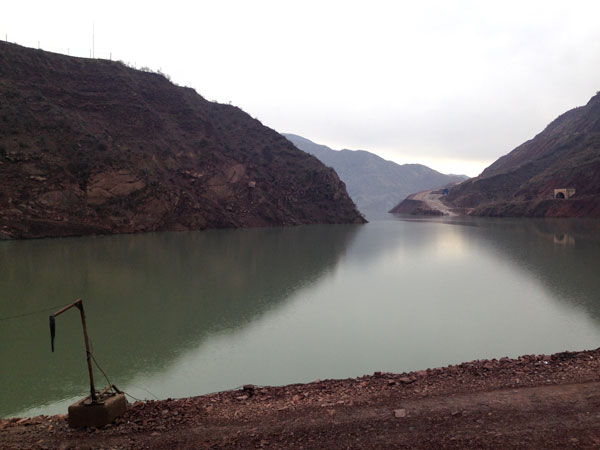
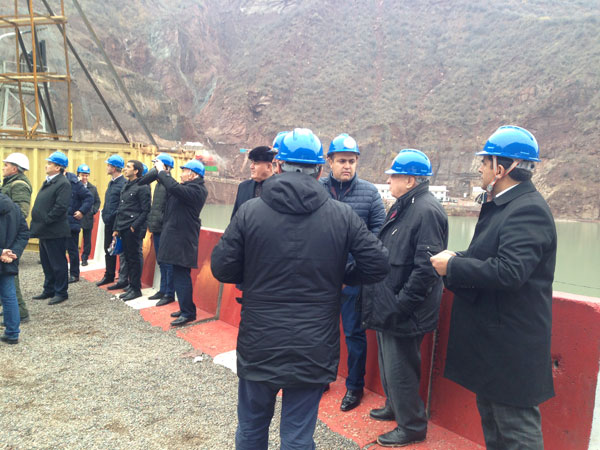
The delegation asked about measures taken to protect the salt dome at the bottom of the dam. It is well known that salt formation is linked to the Ionaksh fault, which goes under the upstream fill of the dam. Mr.Rakhmonov explained that the salt dome will be blocked by bored piles and sheet piling. It is also planned to build an additional tunnel for permanent monitoring.
CONVEYER SYSTEM
For filling of the dam and delivery of construction materials to the site, a 9 km conveyer system is constructed. Its capacity is to be 3,000 tons per hour. At present, 5 km of the system has been completed.
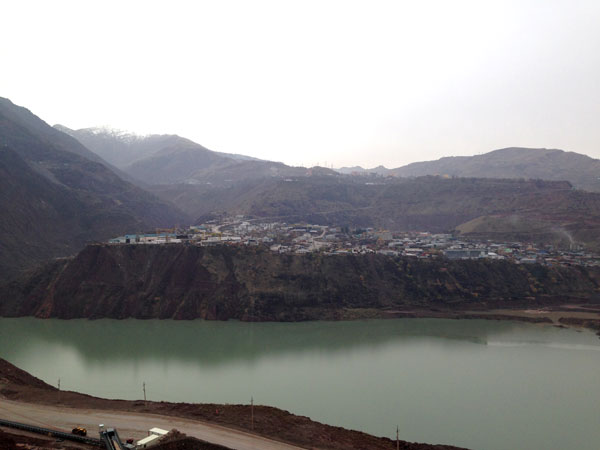
Photo: Beginning of the conveyer system
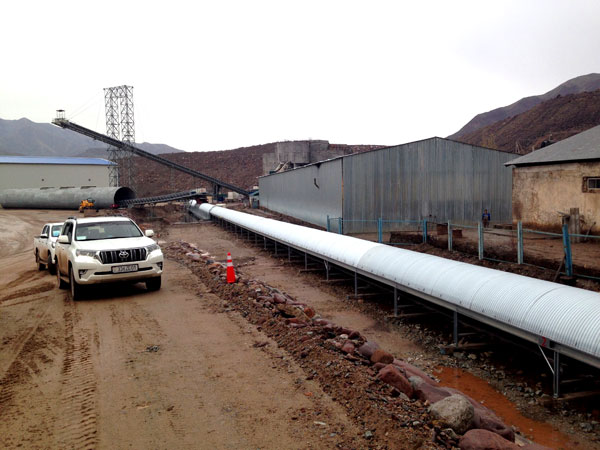
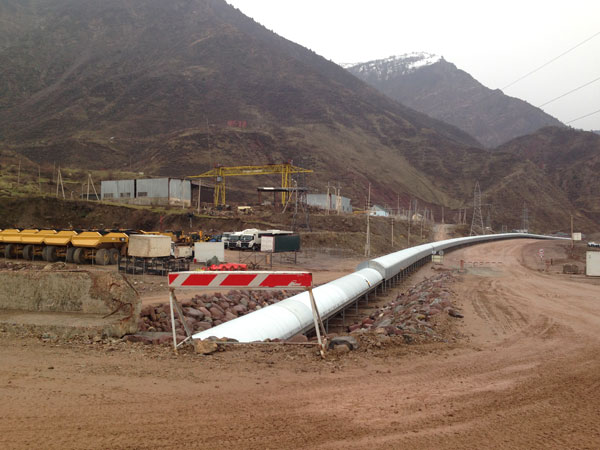
Photo: Part of the conveyer system for construction of the Roghun HPP
INDOOR SWITCHGEARS
Indoor switchgears with gas insulation designed for all six aggregates of Roghun HPP were put into operation on 16 November 2018. 220 kV and 500 kV gas insulated switchgears were installed. 220 kV switchgears will be used for internal needs of the enterprise. Electricity will be supplied from the distribution hub to the single energy system through six 500 kV transmission lines. On 16 November 2018, a 500 kV Dushanbe-Roghun transmission line was put into operation. Installation of the equipment bought at $50 million, including from the German Siemens was started in February 2018 and completed by November 2018.
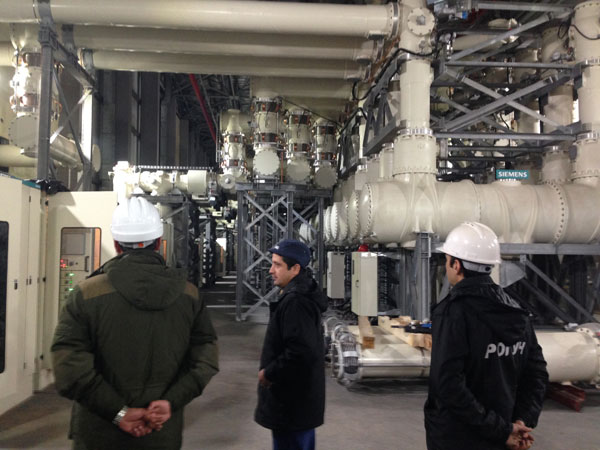
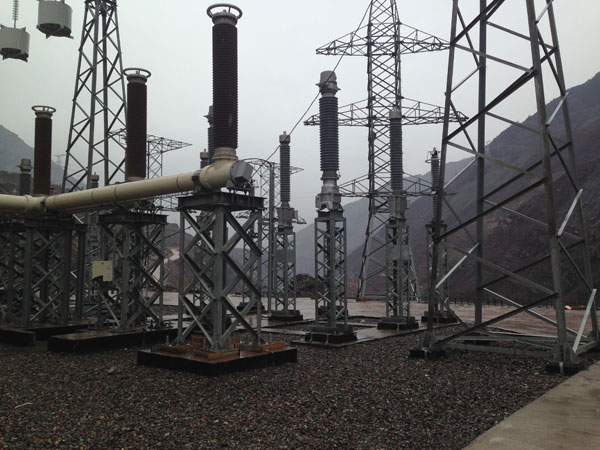
Photo: Indoor switchgears
ESCAPE
The initial project design planned escape for a flood flow of 5,400 m3/s; now the maximum discharge of spillway tunnels is increased to 7,800 m3/s in total.

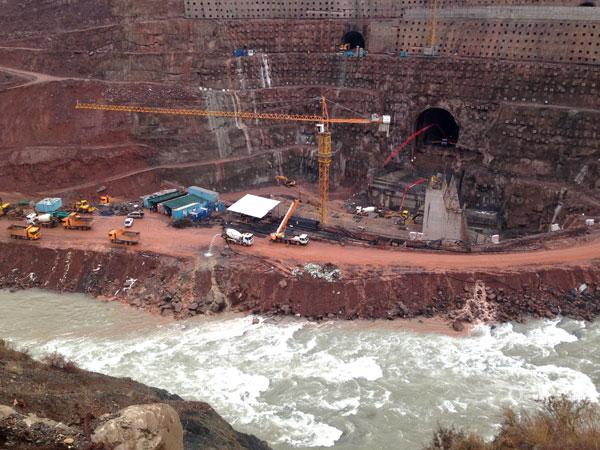
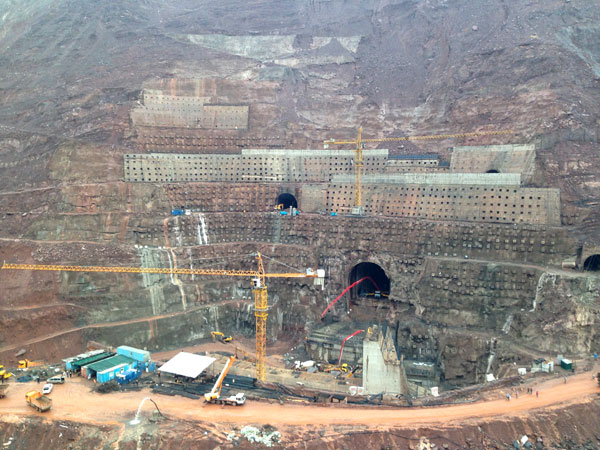
TURBINE HALL
The first aggregate (No.6) of the Roghun HPP was launched on 16 November 2018. Now, it operates on temporary blade wheel and generates 100-115 MW. Aggregate No.5 is planned to be launched in April 2019. These two aggregates will operate at lower head.
Six aggregates, 600 MW each, are to be installed at the hydropower plant. All six aggregates are to be commissioned in December 2024.
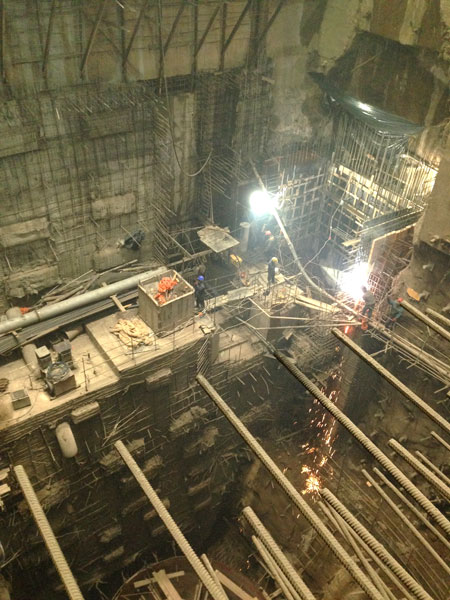
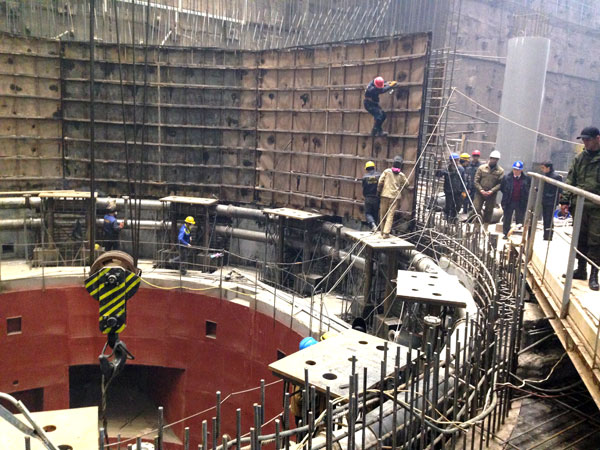
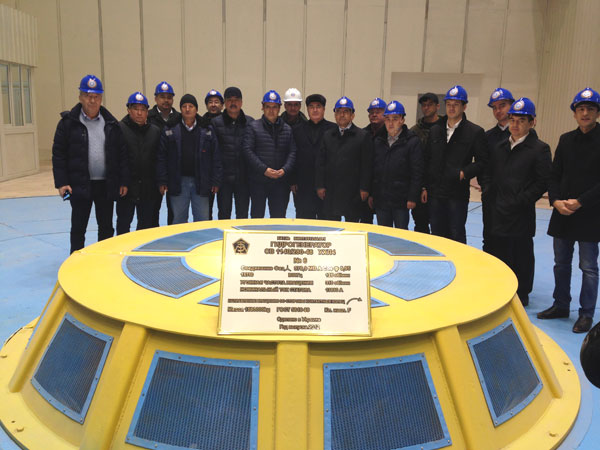
Photo: Aggregate No.6 launched on 16 November 2018
CORE
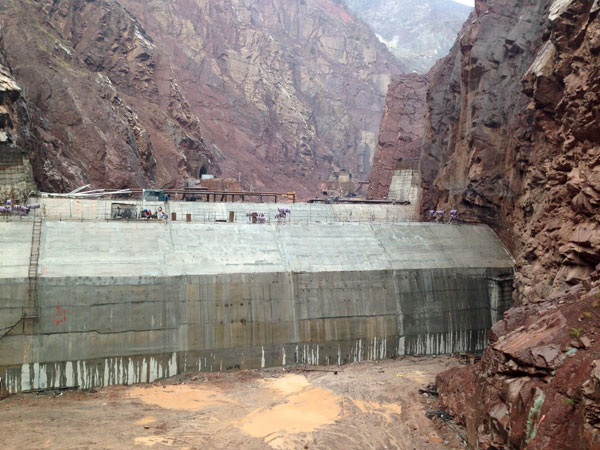
Photo: Core of the dam on the horizon
RECREATION ZONE
A recreation zone is arranged around the reservoir to attract tourists in the future.
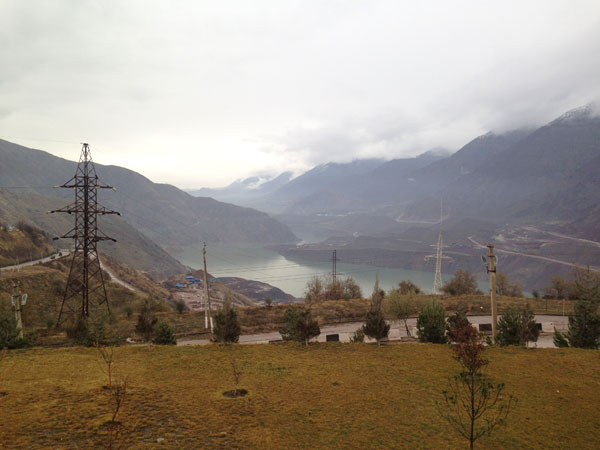
Photo: View over the future reservoir;
water will flood the road on the left
|